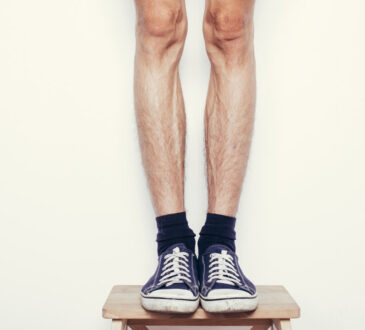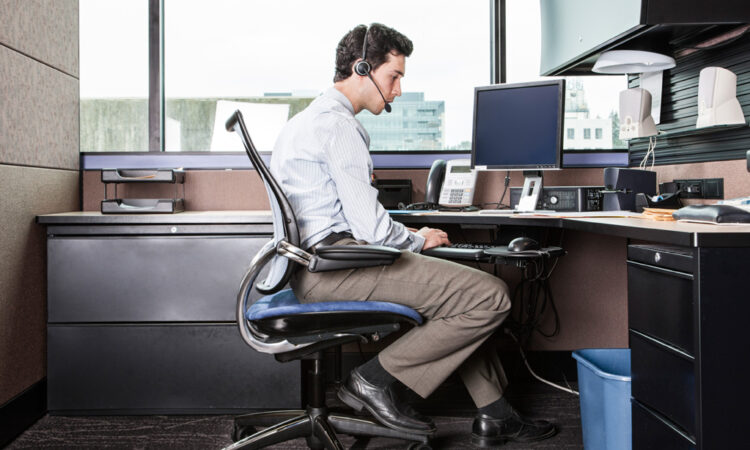
By now you¡¯ve heard that ¡°sitting is the new smoking¡±¡ªmeaning it¡¯s a danger to your health and can shave years off your life.
Some studies found that even if you¡¯re physically active throughout the week and meet recommended guidelines for activity, being sedentary for most of the day still increases your mortality risk. And if you sit for more than eight hours a day and aren¡¯t active, studies say your risk of dying was similar to those of people who were obese or smokers, according to the Mayo Clinic.?
Besides the increased risk of death, sitting for too long can increase blood pressure, and is associated with high blood sugar, extra belly fat, and unhealthy cholesterol levels.? Short of quitting your job and finding one that doesn¡¯t involve sitting all day, you can adjust your workday and office setup to reduce pain and counteract some of the ill effects of sitting.
Here, experts in occupational therapy and physical therapy share how sitting at your desk job all day hurts your health, and what to do about it. We recommend standing up while reading this.
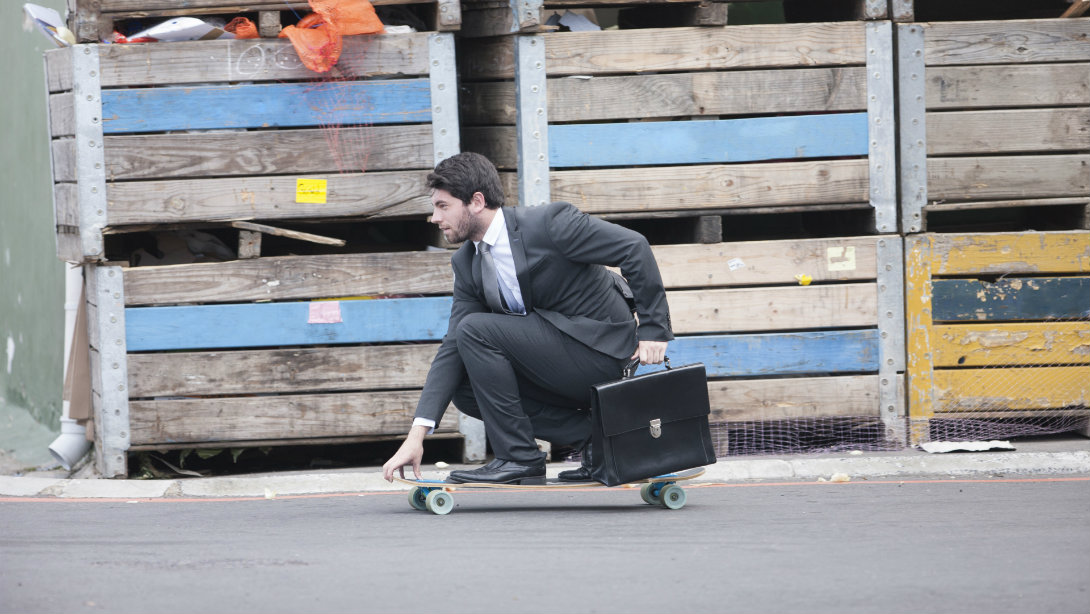
Workout Tips
7 Tips to Stay Fit at Work
Have a sedentary job? Here’s how to make it more physical.
Read article
1 of 5
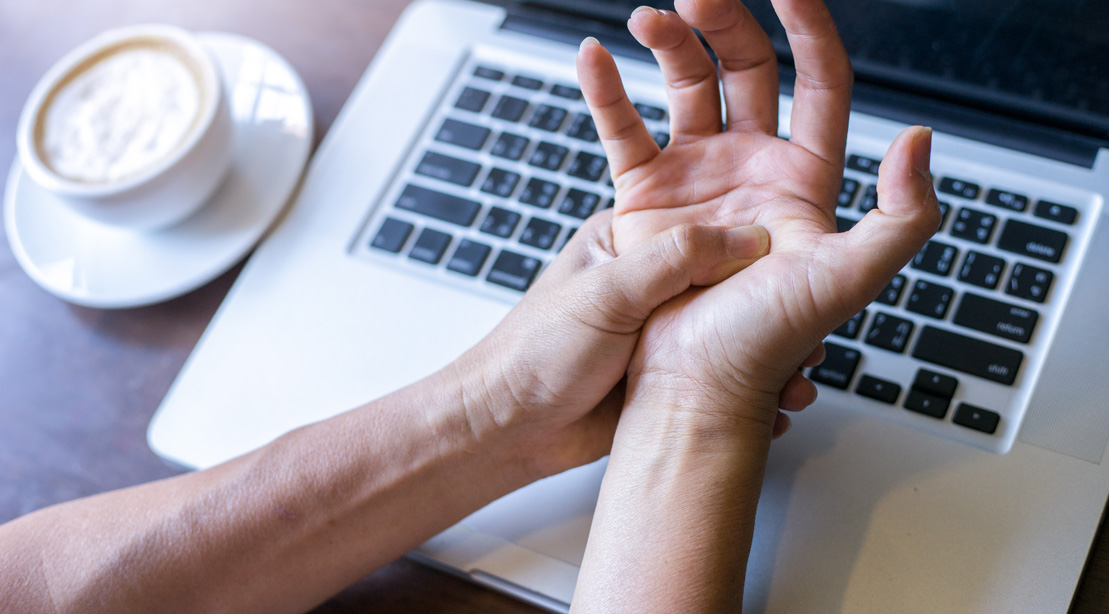
Sitting Can Lead to Carpal Tunnel
¡°When you¡¯re not moving your body and changing postures on a regular basis, that exposes you to issues that we call cumulative musculoskeletal disorders,¡± says Karen Jacobs, occupational therapist, board certified professional ergonomist, and clinical professor at Boston University. If you¡¯re sitting at a desk (or standing) and your mouse and keyboard aren¡¯t set up properly, it could lead to wrist, hand, and arm pain.
¡°Carpal tunnel syndrome is when a median nerve is squeezed or compressed through the wrist,¡± Jacobs says. It can feel like your fingers are hurting or tingling. You may feel wrist pain.
Ways to Help
If you have any of these symptoms, Jacobs recommends talking to your doctor about it first. ¡°You could have an occupational therapist come to your home or office and do an ergonomic job site analysis to see if there¡¯s a good match between the tools and equipment,¡± she says.
Look for one through the American Occupational Therapy Association website by state and local area. They can make recommendations for you, like using a specific keyboard, wrist pad, or a different mouse. Make sure your wrists are straight and your arms and elbows are close to your body, she suggests.
Try this wrist extension stretch from the American Academy of Orthopaedic Surgeons:
- Straighten your arm and bend your wrist back as if signaling someone to ¡°stop.¡±?
- Use your opposite hand to apply gentle pressure across the palm and pull it toward you until you feel a stretch on the inside of your forearm. Hold for 15 seconds.?
- Repeat 5 times, then perform this stretch on the other arm
- Next, do a wrist flexion stretch by extending the arm out, with your palm facing down and bending the wrist so your fingers point down. Pull your hand toward your body and hold this for 15 seconds. Repeat on the other side.
2 of 5

Sitting Can Lead to Back Pain
If you¡¯ve sat at a desk for too long¡ªespecially one that wasn¡¯t set up properly¡ªyour back was probably one of the first places you experienced pain. Parham Tabloei, D.P.T., C.S.C.S., aka ¡°Dr. Par,¡± works at Active Therapy Center in Santa Monica, CA, and has many clients who work at desk jobs in Silicon Beach.
¡°They sit all day and ask, ¡®Why is my lower back hurting?¡¯¡± Most work environments are not ergonomically fit for each employee, he says. ¡°After two or three hours of sitting the muscles in the lower back tend to elongate. They stretch out the ligaments and the muscles themselves,¡± he says. ¡°The pelvis tilts backward, and that slouching effect ends up putting [pressure] on all of those muscles that run up and down close to the spine, to the vertebrae.¡±
¡°This could lead to dysfunction, radiculopathy (pinched nerve), or even shooting pains down the legs and sciatica,¡± Tabloei says. ¡°At the same time, you have stuff going on in your mid-upper back and neck. One thing often leads to another.¡± This causes a cascade of issues: The back muscles get really tight and stiff, the neck ends up hurting, and then people begin complaining of headaches because of that period of extension, he says.
Ways to Help
¡°Even if you have an ergonomically perfect environment, you¡¯re still going to run into health issues down the road if all you¡¯re doing is sitting, and then going home and sitting in front of your computer or TV and then going to bed¡±, Tabloei says. ¡°For every hour of sitting, spend an hour of either standing or stretching.¡± If you have a sit-to-stand desk, he suggests switching from standing to sitting every hour with some stretching bouts in between.
Try these desk stretches to relieve tight back muscles:
Side bend:
- Sit up tall in your chair.?
- Reach across the front of your body with one hand and grab the side of your chair.
- Reach up with the other hand and gently bend toward the opposite side while breathing deeply and slowly sink into the stretch.?
- Hold for 30 seconds, switch sides, aim for three reps on each side.
Thoracic twist:
- Put your elbows on the desk.
- Bend your elbows until hands reach your shoulders.?
- Reach your butt back on the chair to create an extension of your back.
- Lifting one elbow at a time, gently twist the upper back in the direction of the lifted elbow. Hold for 5 seconds and switch to lift the elbow on the other side. Aim for 20 reps.
3 of 5
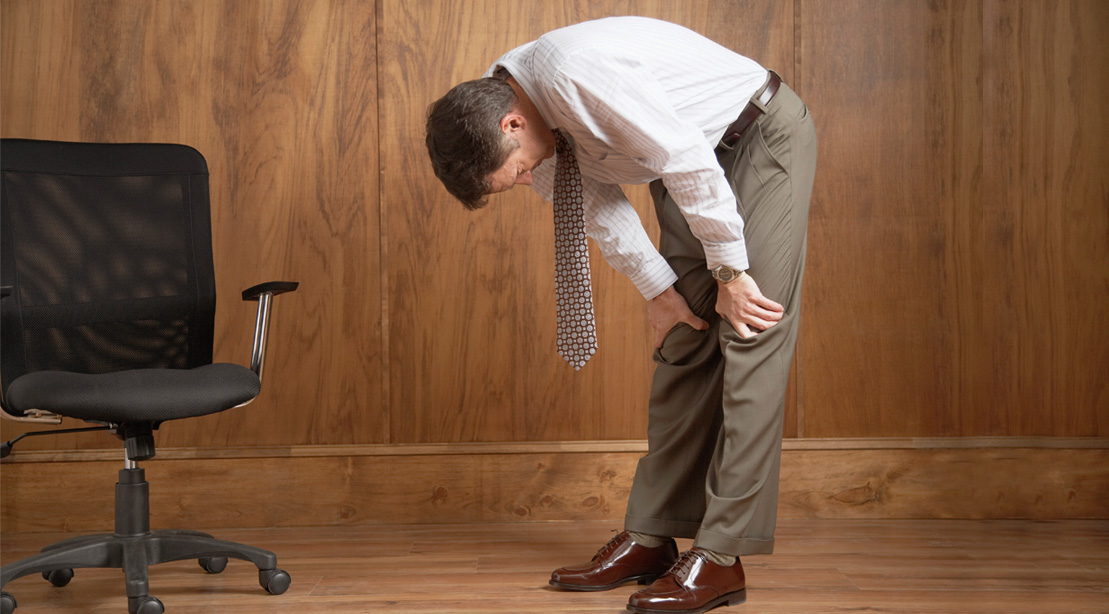
Sitting Can Lead to Sciatica
Sciatica is a type of nerve pain that originates in the lower spine and branches down the back of both legs, which can hinder simple movements like sitting and walking.
¡°One of the things I have people do when I¡¯m evaluating their computer work station is, I have them keep a one-week time log of activities they¡¯re doing,¡± Jacobs says. ¡°So that I get the whole picture of what a week looks like, and then we go over that. I might say, ¡®Could you highlight in yellow when you start having some symptoms? When are your back, neck, and shoulder hurting? Or when is your wrist hurting you?¡¯ That helps me identify what the triggers are.¡± You can keep a log yourself to identify what body parts hurt and when they start to ache so you have a better idea of what may be causing those pains.
¡°If you sit all day and then go to the gym and pump weights, you¡¯re setting yourself up for more stiffening around your body, specifically the joints,¡± says Tabloie. ¡°That¡¯s going to cause all kinds of issues like sciatica, compressed nerves, neurological issues, and pain.¡±
Ways to Help
¡°I recommend taking a break from sitting or standing every 30 minutes. If you¡¯re standing, take a walk. If you¡¯re sitting, get up and stretch, and take a walk to the water cooler,¡± Jacobs suggests. This can help prevent sciatica, as can practicing good posture, according to the Mayo Clinic. ¡°I suggest everyone change and vary their postures often,¡± Jacobs adds. ¡°Stretch before starting your day at your computer.¡±
You may want to see if your company has a policy about standing desks to set up at your office.?Both Jacobs and Dr. Par suggests switching from sitting to standing every hour if you have a standing desk.?
4 of 5
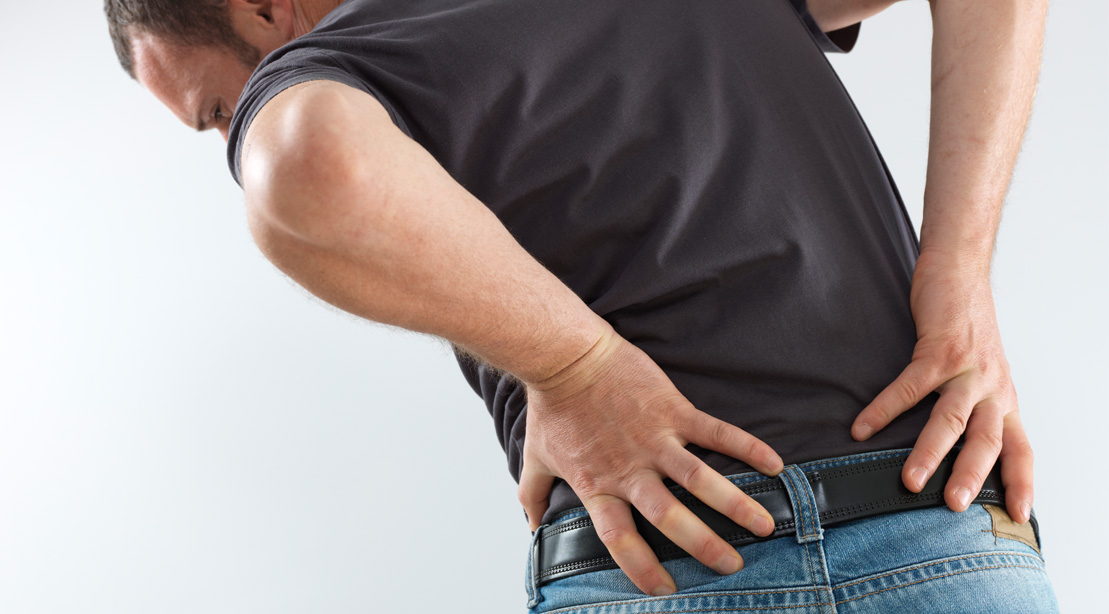
Sitting Can Lead to Tight Hips and Butt Muscles
Experiencing hip pain could be due to a number of factors, but if you¡¯re sitting at a desk all day, your hips and glutes can become tight.
¡°When you¡¯re sitting, your knee is at 90 degrees, and that puts the hip in a shortened position. All the muscles in the front of your hip that run down (like your quads)?tend to get stiff and short in that position,¡± Tabloie says. ¡°Then, some of the rotators of the hip¡ªin the back toward the buttocks¡ªalso become short.¡±
If the gluteal muscles and your IT band are too tight, they can pull at the thighbone where they attach and cause pain on the side.
Ways to Help
Think you shouldn¡¯t care about hip mobility? Having looser, more flexible hips can help you get into a deeper squat when lifting.
¡°People are spending all day sitting and then going to the gym pumping weights thinking that the resistance training is going to save them from some of the back pain,¡± Tabloie says. ¡°It all comes down to flexibility, mobility. You need to have mobility before you can start to create strength and stability around the joint.¡±
Try this stretch after warming up for a few minutes at the gym or at home:
Deep hip flexor and glute warmup:
- Kneel on the ground in a lunge position, uninvolved leg forward.?
- Rotate your pelvis slightly backward, flattening your lower back.
- Place one hand on the wall for support.?
- Lean forward, while maintaining straight posture and keeping your head up.
- Reach back and pull your ankle toward your buttock without bending the hip.?
- Squeeze your glutes.
5 of 5
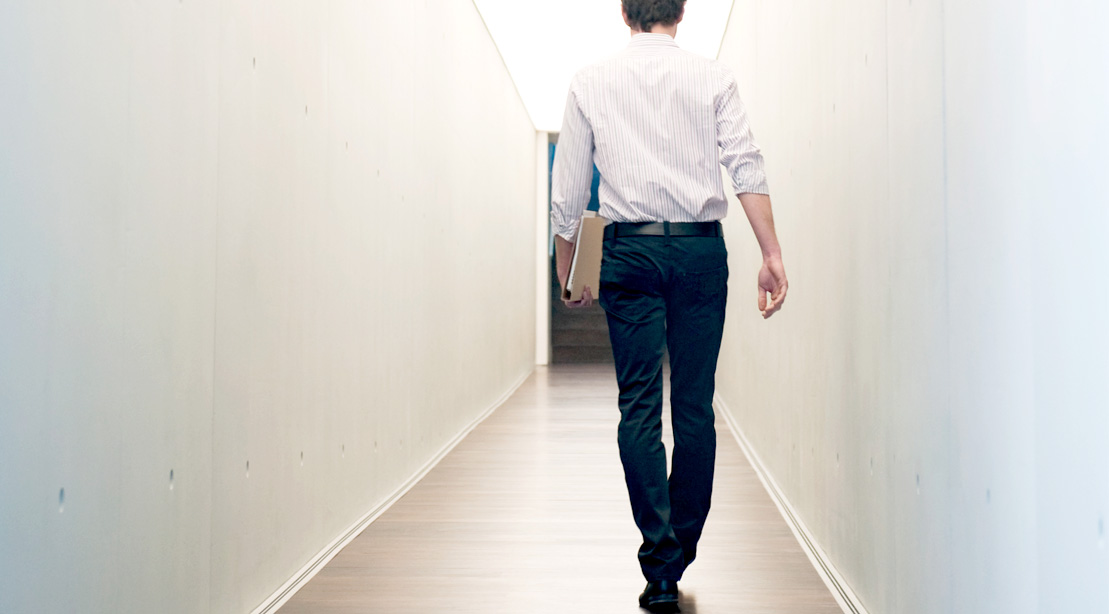
How to Reduce Your Daily Sitting Time
Take the time to go for a 10-minute walk every hour or every couple of hours, Tabloie suggests. When you¡¯re going to the bathroom, maybe go to one on a different floor or further down the hall so it just forces you to walk a little bit more. When you¡¯re sitting statically, things slow down in the body¡ªyour?metabolism rates drop and you have less flow of fluid throughout your body. Getting up and moving is going to lubricate your joints and get your blood flowing.
¡°It¡¯s also important to not just think about what you¡¯re doing at your job, but how you¡¯re using technology at home or traveling,¡± says Jacobs.
You may sit on the train or bus for a commute and have your neck bent to read from your phone. Or, you may have your laptop open while sitting on your couch later, which isn¡¯t great for your health, either.
Just typed all day at work and then texting all night with friends? You¡¯re doing a number on your hands.
¡°One of the things I tell people to do when they¡¯re starting to become symptomatic and experiencing pain is to use voice recognition software when texting or using their smartphones,¡± Jacobs says. ¡°It¡¯s another way you want to give your body a break if you¡¯re doing a lot of repetitive movements.¡±


